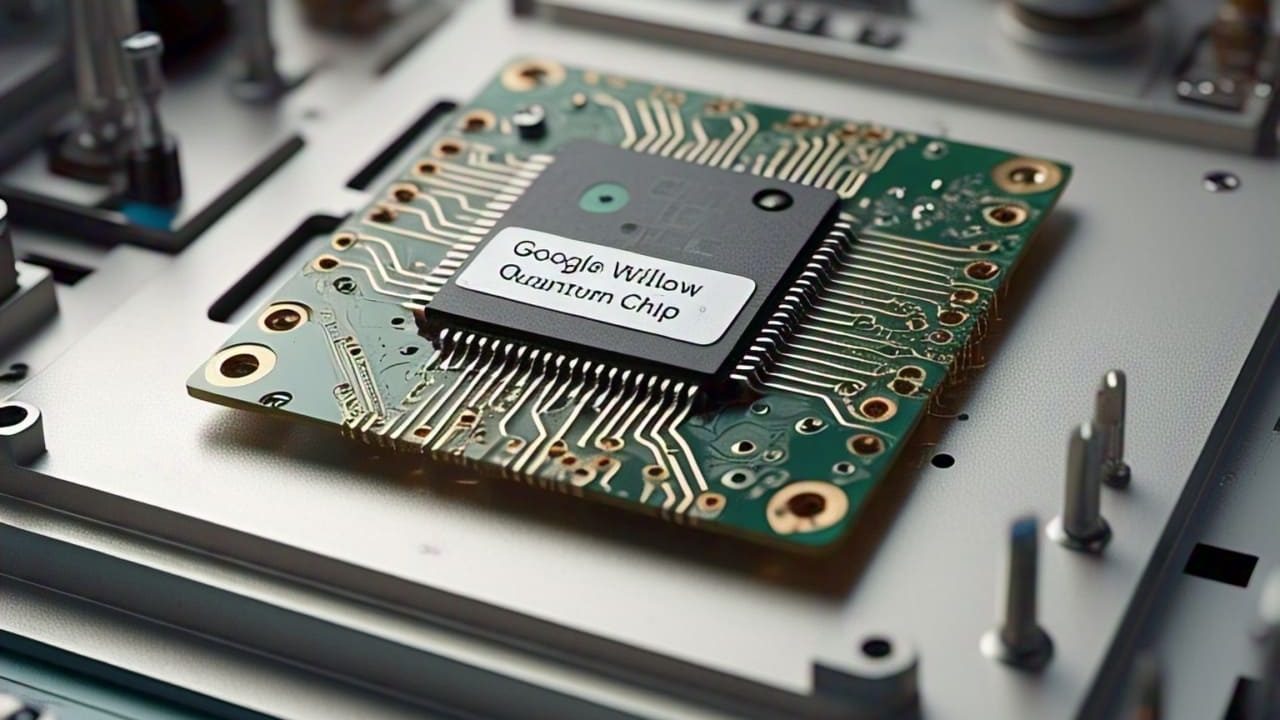
Google has recently announced the development of its new Willow quantum chip, which has generated a lot of excitement and interest in the tech community. The Willow chip is a 53-qubit quantum processor that is designed to be more powerful and efficient than its predecessor, the Bristlecone chip. But what does this mean for the future of quantum computing, and how does it compare to other quantum chips on the market? In this article, we will delve into the details of Google’s Willow quantum chip and explore its potential applications in the real world.
What is the Willow Quantum Chip?
The Willow quantum chip is a type of quantum processor that uses quantum bits or qubits to perform calculations. Qubits are unique because they can exist in multiple states simultaneously, which allows them to process a vast amount of information in parallel. The Willow chip is designed to be more scalable and reliable than previous quantum chips, with a higher qubit count and improved error correction.
According to Google, the Willow chip is capable of performing complex calculations that are beyond the capabilities of classical computers. This has significant implications for fields such as chemistry, materials science, and optimization problems. For example, the Willow chip could be used to simulate the behavior of molecules, which could lead to breakthroughs in the development of new materials and medicines.
Real-World Examples of the Willow Quantum Chip
So, what does this mean for the real world? Let’s take a look at a few examples of how the Willow quantum chip could be used in various industries:
- Chemistry: The Willow chip could be used to simulate the behavior of molecules, which could lead to breakthroughs in the development of new materials and medicines. For example, researchers at Google have used the Willow chip to simulate the behavior of a molecule called beryl, which is a key component in the production of semiconductors.
- Optimization Problems: The Willow chip could be used to solve complex optimization problems, such as the traveling salesman problem or the knapsack problem. This could have significant implications for industries such as logistics and finance, where optimization problems are a major challenge.
- Machine Learning: The Willow chip could be used to speed up machine learning algorithms, which could lead to breakthroughs in areas such as image recognition and natural language processing. For example, researchers at Google have used the Willow chip to train a machine learning model that can recognize images with a high degree of accuracy.
Technical Details of the Willow Quantum Chip
So, how does the Willow quantum chip work? According to Google, the chip is based on a type of quantum computing called superconducting quantum computing. This involves using superconducting materials to create qubits that can exist in multiple states simultaneously.
The Willow chip is designed to be more scalable and reliable than previous quantum chips, with a higher qubit count and improved error correction. The chip is also designed to be more efficient, with a lower power consumption and a higher clock speed.
Comparison with Other Quantum Chips
So, how does the Willow quantum chip compare to other quantum chips on the market? According to a report by IBM, the Willow chip is one of the most powerful quantum chips available today, with a qubit count that is significantly higher than other chips on the market.
However, the Willow chip is not without its challenges. One of the major challenges facing the development of quantum chips is the issue of noise and error correction. Quantum chips are highly sensitive to noise and errors, which can cause them to malfunction or produce incorrect results.
Conclusion
Google’s Willow quantum chip is a significant development in the field of quantum computing, with the potential to revolutionize a wide range of industries. From chemistry to machine learning, the applications of the Willow chip are vast and varied. However, the chip is not without its challenges, and significant work remains to be done to overcome the issues of noise and error correction.
As the tech industry continues to evolve and improve, it will be exciting to see how the Willow quantum chip is used to develop new and innovative applications. With its high qubit count and improved error correction, the Willow chip has the potential to be a game-changer in the world of quantum computing.
References:
- Google. (2020). Introducing the Willow quantum chip.
- IBM. (2020). Quantum computing: A report on the current state of the field.
- Nature. (2020). Quantum computing: A new era for chemistry and materials science.
Search Information from Internet:
- Google’s quantum AI lab
- IBM’s quantum computing platform
- Quantum computing: A new era for chemistry and materials science
- Quantum computing explained
Real-World Applications of Quantum Computing:
- How quantum computing can revolutionize the pharmaceutical industry
- Quantum computing could revolutionize the financial industry
- Quantum computing could revolutionize the logistics industry









